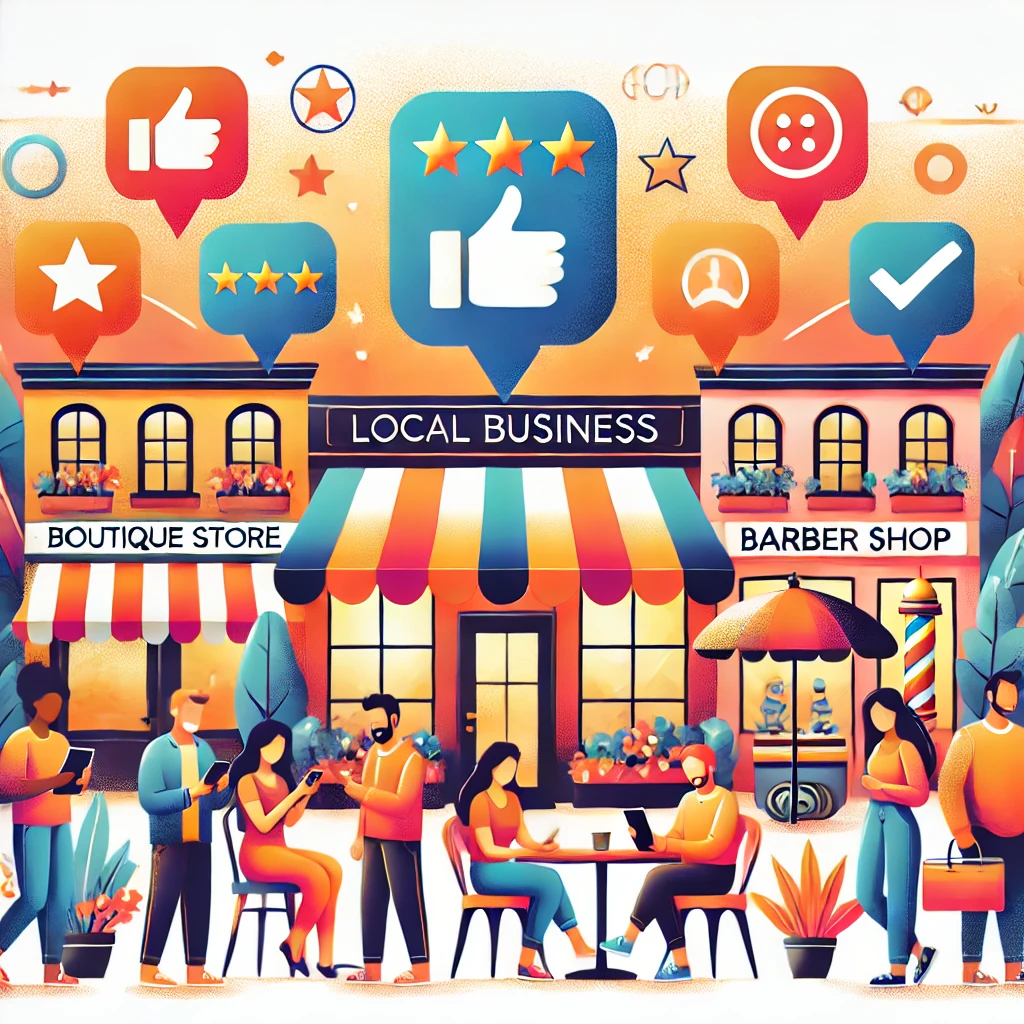
1. Introduction
- What is the significance of social media in business growth?
- How does social media help businesses grow in today’s digital landscape?
2. How Does Social Media Help Business Grow?
- How can improve brand visibility and awareness?
- How does help businesses connect with their target audience?
- How does drive traffic, leads, and conversions?
- How can businesses use analytics to measure growth?
3. How to Promote Business on Social Media?
- What are the best strategies to promote a business on social media?
- How can businesses use both organic and paid methods to grow?
- How to promote your business for free?
- Creating valuable and shareable content
- Leveraging collaborations and influencers
- Running giveaways and engaging campaigns
4. How Can Social Media Impact Communication in Business?
- How does social media enable real-time communication with customers?
- How can businesses to gather customer feedback and insights?
- Why is social media essential for building trust and transparency in business?
- How can social media streamline internal and external communication?
5. How to Grow Business on Social Media?
- What are the steps to build and grow a strong presence?
- How to post for business to engage audiences effectively?
- How does consistency and audience engagement drive growth?
- Why is analyzing metrics crucial for business success?
6. How Important Is Social Media for Business?
- Why is social media an essential tool for modern businesses?
- How does compare to traditional marketing methods?
7. How to Manage Multiple Accounts for Business?
- What are the challenges of managing multiple platforms?
- How can businesses management tools to stay organized?
- What are the best tips for managing content calendars and workflows?
- How does automation save time and ensure consistent posting?
8. How to Post on Social Media for Business?

- What are the types of posts that attract the most engagement?
- How to plan and create effective posts?
- When is the best time to post on social media for businesses?
What is the significance of social media in business growth?
Social media is a powerful marketing tools that can help to business grow in many ways , including :
- Increasing brand awareness : help to increasing brand awareness to grow your business in any field.
- Driving website traffic : campaigns can help to grow and promote your business .
- Networking : facebook , instagram , through this sites you can get easily customers and also grow your business.
how to promote business on social media
Introduction
- Include a compelling statistic: “Over 4.89 billion people worldwide, making it a critical platform for businesses to connect with customers and build trust.”
- Mention how local SEO reviews strategies play a vital role in attracting customers.
1. Why Is Social Media Important for Business?
- Social media offers businesses an opportunity to:
- Reach a vast audience at little to no cost.
- Build brand awareness and trust.
- Engage directly with customers for feedback and reviews.
- Example: Small businesses using Facebook ads saw a 45% improvement in local visibility.
2. Key Social Media Platforms for Business Promotion

- Facebook: Great for ads, community engagement, and local reviews.
- Instagram: Ideal for visual content (images, stories, reels).
- LinkedIn: Perfect for B2B networking and professional content.
- Twitter/X: Quick updates, trends, and customer interaction.
- Google Business Profile (GBP): Integrating GBP for reviews boosts local SEO.
Tip: Maintaining accurate reviews across platforms like GBP helps grow local SEO visibility.
3. How to Promote Your Business on Social Media for Free
- Leverage User-Generated Content (UGC): Encourage customers to share photos/reviews of your business.
- Run Giveaways and Contests: Boost engagement and organic reach.
- Post Consistently: Use tools to schedule posts and manage multiple accounts for business.
- Engage Actively with Comments and Messages: Respond to feedback to build loyalty.
- Encourage Local Reviews: Positive reviews improve credibility and local search rankings.
Example: A small restaurant sharing customer reviews on Instagram led to a 20% rise in footfall.
4. How to Grow Your Business with Paid Strategies
- Use Social Media Ads: Platforms like Facebook and Instagram allow highly targeted ads.
- Collaborate with Influencers: Micro-influencers help you reach local audiences.
- Retarget Website Visitors: Remarket to users who interacted with your website .
Data Insight: Businesses that invest in paid ads see a 50% higher return on investment when they combine ads with positive social proof, such as customer reviews.
5. How to Manage Multiple Accounts for Business
- Use scheduling tools like Hootsuite, Buffer, or Meta Business Suite.
- Create a content calendar to align posts across platforms.
- Repurpose content: Turn blog posts into carousels, reels, and tweets.
6. How Can Social Media Impact Communication in Business?
- Real-time customer feedback helps address concerns quickly.
- Builds transparency and trust through engagement.
- Enables businesses to showcase reviews and case studies to influence buying decisions.
Example: A local clothing store boosted their customer response rate by sharing video testimonials.
Keywords Used:
- How important is social media for business impact communication in business
- How to manage multiple accounts for business
This structure ensures SEO optimization while delivering actionable tips for your readers! Let me know if you need me to expand or refine any section further.
how can social media impact communication in business
1. Introduction
- Brief overview of the evolution of business communication.
- Role of social media in transforming how businesses interact with customers and stakeholders.
- Importance of leveraging effectively.
2. The Impact of Social Media on Business Communication
- Accessibility and Reach
- Instant communication across global audiences.
- Data: 80% of internet users interact with brands on social media (Source: [reliable source]).
- Two-Way Communication
- Shift from one-sided marketing to interactive engagement.
- Real-time feedback and customer support through comments and direct messages.
- Building Transparency and Trust
- Sharing company updates and behind-the-scenes moments enhances credibility.
- Example: How transparency during crises (e.g., product recalls) builds trust.
3. Key Benefits for Businesses
- Enhanced Brand Visibility
- Examples of businesses using viral campaigns to gain recognition.
- Customer Relationship Management (CRM)
- Improved customer service through platforms like Facebook Messenger or Twitter.
- Data: More than 50% of customers prefer social media for service inquiries (Source: [reliable source]).
- Cost-Effective Marketing
- Strategies like organic posting and leveraging local SEO reviews to build reputation.
- Mention free tools like Facebook Pages or Instagram Business profiles.
4. Challenges and Solutions
- Overcommunication or Miscommunication
- Risk of information overload; importance of clear, concise posts.
- Managing Multiple Accounts
- Solutions like social media management tools (e.g., Hootsuite).
- Incorporate the keyword: “how to manage multiple social media accounts for business”.
5. The Role of Local SEO Reviews in Communication

- Importance of Local SEO
- Highlight how responding to customer reviews on platforms like Google My Business enhances engagement.
- Example: A local café replying to reviews boosts visibility and credibility.
- Impact on Social Media Strategies
- Sharing positive local reviews on social platforms to build trust and attract new customers.
6. Best Practices for Effective Social Media Communication
- Consistency and Relevance
- Use a content calendar for regular, targeted updates.
- Engagement Tactics
- Tips on how to post on social media for business, including hashtags, visuals, and stories.
- Leveraging Free Strategies
- Discuss how to promote your business on social media for free, like collaborating with influencers or user-generated content.
how to grow business on social media
1. Introduction
- The growing importance of social media for businesses.
- Overview of its potential to reach millions of users globally.
- Hook: “Businesses using social media effectively experience 37% more customer engagement (Source: [reliable source]).”
2. The Role of Social Media in Business Growth
- Increased Brand Awareness
- Statistics on the daily active users of popular platforms like Facebook, Instagram, and LinkedIn.
- Enhanced Customer Interaction
- Examples of how businesses interact with customers in real-time.
- Driving Website Traffic and Conversions
- Linking campaigns to websites and landing pages for leads and sales.
3. Effective Strategies to Grow Your Business on Social Media
- Define Clear Goals
- Set objectives like increasing followers, engagement, or sales.
- Understand Your Audience
- Use analytics tools to determine audience demographics and preferences.
- Content Creation and Consistency
- Tips on how to post on social media for business.
- Example: Use engaging formats like videos, polls, and infographics.
- Leverage Paid and Organic Strategies
- Promote posts and use paid ads for a broader reach.
- Explore how to promote your business for free with user-generated content, contests, and hashtags.
4. Local SEO Reviews and Their Importance
- Impact on Social Media Growth
- Sharing positive reviews from platforms like Google My Business to build credibility.
- Case Study
- Example of a local business using reviews to enhance its social media presence and attract new customers.
- Encourage Reviews Through Social Media
- Run campaigns encouraging customers to leave feedback.
5. How to Manage Social Media Effectively
- Managing Multiple Accounts
- Tools like Buffer and Hootsuite for efficient posting and scheduling.
- Mention the keyword: “how to manage multiple social media accounts for business”.
- Monitor Trends and Analytics
- Adjust strategies based on trending hashtags and audience insights.
6. Engage and Build Relationships
- Respond Promptly
- Interact with followers through comments, messages, and live sessions.
- Collaborate with Influencers
- Partner with micro-influencers to reach niche audiences.
- Customer-Centric Campaigns
- Highlight how social media can impact communication in business and strengthen relationships.
7. Examples of Successful Social Media Growth
- Highlight stories of businesses that achieved growth through platforms like Instagram or TikTok.
- Include a local business example leveraging local SEO and reviews.
how to promote your business on social media for free
1. Introduction
- Highlight the importance of social media as a cost-effective platform for businesses.
- Mention that 54% of social browsers use to research products (Source: [reliable source]).
- Brief overview of free promotional strategies that work for businesses of any size.
2. Create a Strong Social Media Presence
- Optimize Your Profiles
- Ensure your profiles are complete and consistent across platforms.
- Include a clear bio, contact information, and a link to your website.
- Select the Right Platforms
- Focus on platforms most relevant to your audience (e.g., Instagram for visual content, LinkedIn for B2B).
3. Post Quality Content Consistently
- Content Planning
- Use a content calendar to stay organized.
- Tips on How to Post on Social Media for Business
- Share educational, entertaining, and engaging content like infographics, videos, and polls.
- Leverage Free Tools
- Tools like Canva for creating graphics and ChatGPT for crafting captions.
4. Engage With Your Audience
- Respond to Comments and Messages
- Build relationships by interacting with your followers.
- Create Interactive Posts
- Use polls, quizzes, and Q&A sessions to drive engagement.
- Encourage User-Generated Content (UGC)
- Run campaigns asking customers to share photos using your products/services.
5. Use Local SEO and Reviews
- Encourage and Share Positive Reviews
- Highlight local SEO reviews on platforms like Google My Business.
- Tag Locations in Posts
- Use geotags to attract local audiences.
- Collaborate Locally
- Partner with other local businesses to promote each other on social media.
6. Utilize Community Features
- Join Groups and Communities
- Participate in relevant Facebook or LinkedIn groups to connect with potential customers.
- Hashtags and Trends
- Research trending and niche hashtags to increase post visibility.
- Example: Use hashtags like #LocalBusiness, #SmallBiz, or platform-specific trends.
7. Promote Through Collaborations and Influencers
- Partner With Influencers
- Collaborate with micro-influencers who might promote your business for free in exchange for products or services.
- Collaborative Campaigns
- Team up with non-competing businesses for shoutouts or joint promotions.
8. Monitor Performance and Adjust
- Use Analytics Tools
- Track engagement metrics to see what content performs best.
- Free tools like Facebook Insights or Instagram Analytics.
- Adapt Based on Data
- Focus on content and strategies that resonate with your audience.
how important is social media for business
1. Introduction
- Overview of the rise of social media in the digital era.
- Key statistic: 90% of marketers increases business exposure (Source: [reliable source])
2. The Role of Social Media in Business Success
- Building Brand Awareness
- Statistics: 71% of consumers are more likely to buy from a brand they follow.
- Example: How startups leverage Instagram to gain traction.
- Enhancing Customer Engagement
- Two-way communication fosters loyalty and trust.
- Mention how can impact communication in business.
- Driving Traffic and Conversions
- Link social media campaigns to your website or e-commerce platform.
3. Benefits of Social Media for Businesses
- Cost-Effective Marketing
- Highlight how to promote your business for free with organic reach.
- Real-Time Feedback
- Collect reviews and opinions directly from customers.
- Global and Local Reach
- Use local SEO strategies, like promoting local SEO reviews on platforms like Google My Business.
4. How Social Media Influences Business Decisions
- Data-Driven Insights
- Analyze user behavior and preferences with tools like Facebook Insights.
- Adapting to Trends
- Example: Businesses capitalizing on TikTok trends for virality.
5. Challenges of Social Media in Business
- Time and Resource Management
- Difficulty in managing multiple accounts effectively.
- Mention tools for how to manage multiple accounts for business.
- Content Saturation
- Standing out in a crowded digital space requires creativity and strategy.
- Negative Feedback and Crisis Management
- Importance of addressing criticism constructively.
6. Local SEO Reviews: A Crucial Aspect of Social Media
- Boosting Credibility
- Share and highlight customer reviews on social platforms.
- Driving Local Traffic
- Use geotags and local hashtags for targeted reach.
- Case Study
- Example of a local restaurant leveraging and reviews to increase footfall.
7. Best Practices for Businesses on Social Media
- Consistency and Quality Content
- Use a content calendar to maintain regular posting.
- Engagement Over Broadcasting
- Interact with followers instead of just posting promotional content.
- Leveraging Trends and Free Strategies
- Tips on how to grow business using free tools and strategies.
how to manage multiple social media accounts for business
1. Introduction
- The importance of maintaining a strong presence across multiple social platforms.
- Statistic: 72% of businesses use multiple platforms to engage their audiences (Source: [reliable source]).
- Overview of challenges businesses face in managing multiple accounts.
2. Why Managing Multiple Accounts Is Essential
- Reaching Diverse Audiences
- Different platforms cater to different demographics (e.g., LinkedIn for professionals, Instagram for younger audiences).
- Building a Consistent Brand Image
- Ensures cohesive messaging across platforms.
- Maximizing Marketing Opportunities
- Leveraging each platform’s unique features for engagement and conversions.
3. Common Challenges in Managing Multiple Social Media Accounts
- Time-Consuming Tasks
- Regular posting, responding to messages, and monitoring analytics.
- Content Overlap
- Avoiding repetition while maintaining relevance.
- Tracking Performance Across Platforms
- Difficulty in assessing which platform drives the most results.
4. Effective Strategies to Manage Multiple Social Media Accounts
- Use Social Media Management Tools
- Overview of tools like Hootsuite, Buffer, and Sprout Social.
- Features: Scheduling, analytics, and centralized dashboards.
- Create a Content Calendar
- Plan and organize posts for consistency.
- Tips on how to post on social media for business regularly.
- Set Goals for Each Platform
- Tailor content strategies based on platform-specific goals.
- Example: LinkedIn for B2B connections, Instagram for brand storytelling.
- Batch Content Creation
- Save time by creating content in bulk and scheduling it in advance.
5. Integrate Local SEO into Social Media Management
- Highlight Local SEO Reviews
- Share customer reviews and testimonials across platforms.
- Optimize Profiles for Local Searches
- Include location-based keywords and geotags in your posts.
- Encourage Audience Engagement
- Run campaigns asking followers to leave reviews on Google My Business or Yelp.
6. Tips for Engaging with Audiences Across Platforms
- Respond Promptly to Comments and Messages
- Build trust and relationships with followers.
- Customize Content for Each Platform
- Use Instagram Stories, LinkedIn articles, or Twitter threads based on the platform’s strengths.
- Leverage User-Generated Content (UGC)
- Encourage customers to share their experiences and tag your brand.
7. Monitor Performance and Adjust Strategies
- Use Analytics to Track Success
- Metrics like engagement rate, follower growth, and click-through rate.
- Adapt Based on Insights
- Focus more on platforms that drive results while maintaining a presence on others.
how to post on social media for business
1. Introduction
- Importance of a strong social media presence for business growth.
- Statistic: 93% of marketers provides significant ROI (Source: [reliable source]).
- Hook: The key to success lies in knowing how to post effectively.
2. Understanding Your Audience
- Define Your Target Audience
- Identify demographics, preferences, and platform habits.
- Tailor Content to Audience Needs
- Example: Professionals prefer LinkedIn posts, while younger audiences engage more on Instagram or TikTok.
3. Planning Your Content
- Create a Content Calendar
- Schedule posts to maintain consistency and avoid last-minute rushes.
- Set Goals for Each Post
- Examples: Increase brand awareness, drive traffic, or generate leads.
- Use a Variety of Content Formats
- Videos, images, infographics, stories, and carousels to keep content diverse and engaging.
4. Crafting Engaging Posts
- Write Clear and Compelling Captions
- Use attention-grabbing headlines and a strong call-to-action (CTA).
- Incorporate Keywords
- Mention relevant keywords like “how to promote your business on social media for free” to improve visibility.
- Use Hashtags Strategically
- Include trending and niche hashtags to increase reach.
- Example: #LocalBusiness, #SmallBizGrowth.
5. Best Practices for Posting on Different Platforms
- Facebook
- Mix photos, videos, and text updates.
- Use Facebook Stories for quick updates and polls.
- Instagram
- Focus on high-quality visuals and Instagram Reels.
- Engage with followers through comments and DMs.
- LinkedIn
- Share professional insights, case studies, and thought leadership posts.
- Twitter
- Post concise updates and join trending conversations.
6. Leveraging Local SEO in Posts
- Include Location Tags and Keywords
- Mention your city or region in posts to attract local customers.
- Highlight Local SEO Reviews
- Share positive feedback from Google My Business or Yelp on social platforms.
- Engage with Local Community
- Collaborate with local influencers or businesses to expand reach.
7. Analyzing Performance and Optimizing Posts
- Monitor Engagement Metrics
- Likes, comments, shares, and clicks to measure success.
- Test Different Strategies
- Experiment with post timings, formats, and captions.
- Refine Based on Data
- Focus on what resonates most with your audience.
8. Common Mistakes to Avoid
- Posting Without a Strategy
- Emphasize the need for planning and goal setting.
- Inconsistent Posting
- Irregular activity can reduce follower engagement.
- Ignoring Audience Feedback
- Importance of responding to comments and adapting content based on preferences.
- Learn more
